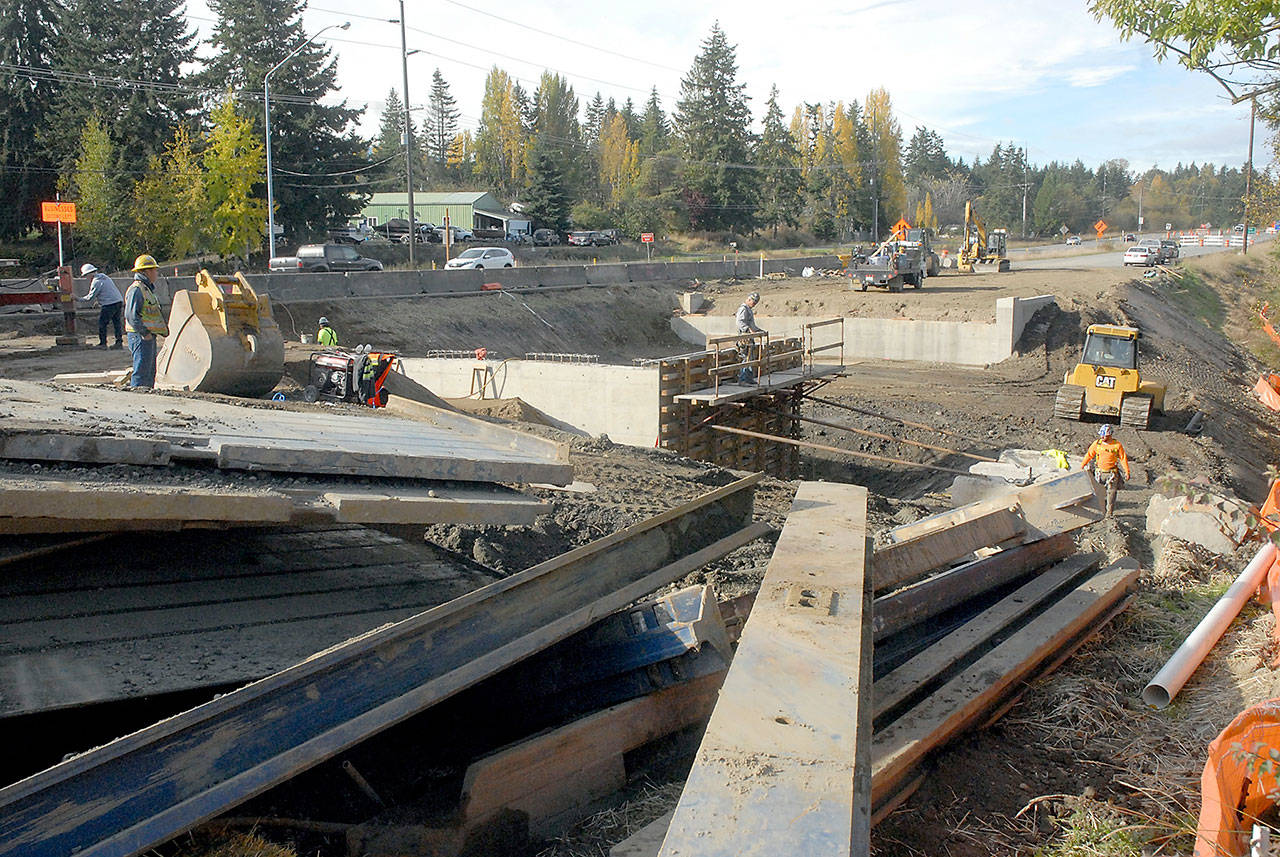Bridge construction on U.S. Highway 101 east of west of Sequim is on budget and on schedule to be completed next fall, a state Department of Transportation official said.
The $35.6 million project will replace five defective fish culverts with two full-span bridges or larger concrete-box culverts to improve fish migration in Bagley and Siebert creeks and their tributaries.
“It’s a huge benefit for salmon restoration,” WSDOT spokeswoman Tina Werner said in an Oct. 28 interview.
“The potential habitat gain for the fish is estimated at 41 miles, so this will be a big environmental win.”
The two-year project is part of WSDOT’s ongoing effort to improve fish passage under state or federal highways. Bagley and Siebert creeks support chinook and coho salmon, steelhead and bull trout.
Scarsella Brothers, Inc. of Kent, WSDOT’s primary contractor, broke ground on the project in May.
Highway traffic will continue to be funneled into one lane at the creeks until the work is complete. The temporary 45 mph speed limit will remain in effect though next fall.
“We’re very appreciative of the public’s patience, and we’re excited that work has progressed well,” Werner said.
There were 23 collisions investigated on U.S. Highway 101 through the four-mile construction zone from April 1 though Oct. 29, down from 24 during the same period in 2019, according to State Patrol statistics.
There had been 544 speed violations issued the project area since April 1, down from 667 during the same dates in 2019.
“We appreciate the cooperation of the motorists who have adhered to the temporary speed reduction within the active construction zone throughout the project,” said Trooper Chelsea Hodgson, State Patrol spokeswoman.
“Troopers have patrolled the area during the project to make sure both those who are driving through, as well as the crews working the project, are safe.”
“We can never stress enough for drivers to always slow down and pay extra attention in those areas for a variety of reasons,” Hodgson added.
“Traffic patterns are often changed, lanes are narrowed and crews are actively working alongside flowing traffic.”
WSDOT is under a 2013 federal court injunction to remove state-owned culverts that impede salmon migration in much of Western Washington by 2030.
Werner said the existing culverts have “significant barriers” related to water velocity.
“We try to bundle many of these barriers in one contract to reduce construction fatigue for drivers so that we’re not having to come back year after year after year,” Werner said in a telephone interview.
Crews this week were working on abutment walls and foundations for the western half of the Bagley Creek bridge. Girders for the bridge are scheduled to be delivered during the second week of November, Werner said.
Three miles to the east, crews were wrapping up soil stabilization work along Siebert Creek.
“They’re going to continue work through the winter,” Werner said.
“Our crews will be able to maintain current travel flow, which is a single lane in each direction.”
The project was designed to maintain traffic flow on U.S. Highway 101. Drivers may encounter brief, intermittent closures when the bridge girders are delivered, Werner said.
In-water work will take place next summer during an eight-week fish window.
“At that time, Siebert (Creek) bridge will be up and the retaining walls will be done,” Werner said.
“That’s when our crews will go in, and they’re going to remove the old, outdated culverts. They’ll be removing those and doing a lot of stream-bed restoration with our biology teams.”
Updates on the Bagley and Siebert Creek fish barrier replacements will be posted on the WSDOT website, wsdot.wa.gov.
“This is a huge restoration project for DOT, and we are doing everything we can to make sure that the contractor stays on schedule, and we’re looking forward to having this project wrapped up next fall,” Werner said.
“We appreciate everyone’s patience.”



